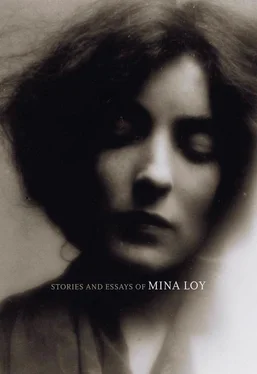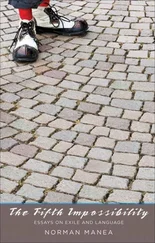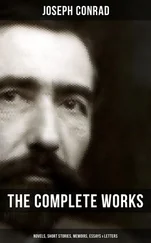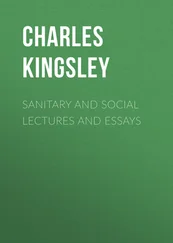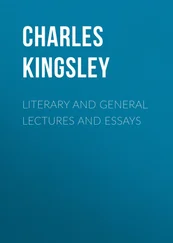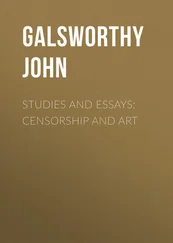Mina Loy - Stories and Essays of Mina Loy
Здесь есть возможность читать онлайн «Mina Loy - Stories and Essays of Mina Loy» весь текст электронной книги совершенно бесплатно (целиком полную версию без сокращений). В некоторых случаях можно слушать аудио, скачать через торрент в формате fb2 и присутствует краткое содержание. Год выпуска: 2011, Издательство: Dalkey Archive Press, Жанр: Современная проза, на английском языке. Описание произведения, (предисловие) а так же отзывы посетителей доступны на портале библиотеки ЛибКат.
- Название:Stories and Essays of Mina Loy
- Автор:
- Издательство:Dalkey Archive Press
- Жанр:
- Год:2011
- ISBN:нет данных
- Рейтинг книги:3 / 5. Голосов: 1
-
Избранное:Добавить в избранное
- Отзывы:
-
Ваша оценка:
- 60
- 1
- 2
- 3
- 4
- 5
Stories and Essays of Mina Loy: краткое содержание, описание и аннотация
Предлагаем к чтению аннотацию, описание, краткое содержание или предисловие (зависит от того, что написал сам автор книги «Stories and Essays of Mina Loy»). Если вы не нашли необходимую информацию о книге — напишите в комментариях, мы постараемся отыскать её.
Stories and Essays of Mina Loy
Stories and Essays of Mina Loy — читать онлайн бесплатно полную книгу (весь текст) целиком
Ниже представлен текст книги, разбитый по страницам. Система сохранения места последней прочитанной страницы, позволяет с удобством читать онлайн бесплатно книгу «Stories and Essays of Mina Loy», без необходимости каждый раз заново искать на чём Вы остановились. Поставьте закладку, и сможете в любой момент перейти на страницу, на которой закончили чтение.
Интервал:
Закладка:
Alas the exercise of force destroys the ephemeral sensations—
Nerves are not ponderous—
Inversely — the woman who scratches her face will feel pain—
the woman who gets her head blown off does not.
THE LOGOS IN ART
In the distances of space our greatest aesthetic interpreter was not an artist until he became an acrobat
Picasso that aesthetic acrobat—
Greek the spirals of form move round the limbs — orderly to the omniprevalent calculation of the relation of surface to centrality.
The movement of the object is provided by the so strictly retained attention of the eye—
The perfection of statuary is a challenge to the congruent disposal of the atmosphere—
The church — that ungainly edifice that so impoliment —shuts out the divine “view”
The dual subjective in Pictorization — subjective conception — and subjective projection—
The possible extension of their relativity. The significance of form is profound according to its dual relativity to the finite and the infinite — of a metre to its rhythmic conformity to finite and infinite rhythm.
It is a pauper aesthetic that falls to the stacking — inclining and laying of linear extensions—
It is the unpresentable in presentation that causes it to exceed replica—
Bas relief that movement is intercepted to prolong itself in lateral intensity — in lieu of a forwarding passagère
The movement is carrying itself into the Eye instead of progressively out of our sight.

The new Zig Zag decoration was the most conducive to the premature symptomatisation of intoxication
When the rectangular falls down on its job —
Our home will be “on” the Cinema—
Screen

There has been some good modern setting in— nouvelle vierges —and the first one has ever had
Still there is a sublimity that lacks the sublime—
that penetrates these readopted proportions of elevation—
Apparently because the proportions of their superficies are too great for their purpose — leading as they do to no altars— For there is no common-sense reason why a straight line should not have the same significance in the twelfth and the twentieth century—
The logos is insinuated Modern art — because there is a certain renaissance — evidently the masters they follow were of healthier contagion than those of some previous generations—
And there is no renaissance without breath—
The breathing upon of the logos—

But by what way does the logos inform contemporary art — according to the laws of chance—
THE METAPHYSICAL PATTERN IN AESTHETICS
The pattern of a work of art is interposed between the artist’s creation and the observer in the mode of a screen formed by the directing lines or map of the artist’s genius.
This is the essential factor in a work of art.
The old masters presented the esoteric plan of their individuality superimposed upon a “subject”.
The moderns present the map of their individuality without the secondary reconstruction of the pictorial coherence of our customary vision.
Every time we recognise the work of any given master it is by the singularity of this map of his aesthetic system. Never by the subject.
It would be a reductio ad absurdum —the ability to judge a work of art by the subject it represents.
If the pictorial aspect were the fundamental entity of a work of art, a new subject by a known master would be unattributable; “So and so” paints girls in sunlight —tomorrow he paints a man in a subway. By what law do we recognise the individuality of the master?
By the identity of this metaphysical pattern with his personal aesthetic. This knocks mere subject out of the reckoning as an indispensable element in art.
The intention of the modern movement is to liberate art from the convention of pushing this individualistic aesthetic structure to a final pictorial conclusion.
The modern has chosen to exteriorate the “God in the machine” without the ceremonies of the graven image.
The stages of progress towards the presentation of the purely metaphysical structure of an aesthetic creation have been marked various degrees of subject in dissolution and subject in process of crystallization influenced by the artist’s perception of phenomenal dynamics.
The picture in which the transpiercing of the pictorial subject by the metaphysical pattern is most completely revealed is the El Greco landscape lately loaned to the Metropolitan Museum. Here the “intention” of the moderns has been forestalled to the extent that the aesthetic pattern projects itself beyond the subject matter.
The same is to a subtler degree noticeable in the rhythmic arabesques to which he induces his religious figurations.
In all the masters we can track this formative metaphysique to within their spatiality, volume, and motor idiosyncrasies of technique, however compactly incorporated in objective reproduction.
MI & LO
I.
Form
lo
Does form result from seeing unform repeatedly? For the first man I see is formless, in that he has no recognisable form. But the second man I see is recognisable as having the same form as the first man I have seen.
mi
Not so. For the one half of the first man I see is the replica of the formation of the other half of the first man I see. Thus, instantaneously he takes form.
The intention of his form being endorsed by its duality. Form is the union of identicals.
lo
The first half being the question to form and the second half the answer of form.
mi
Form being thus a token of the truth in which the question and the answer are incorporate and inseparable: truth being the question that answers itself — as immortality existing as a question in man’s mind, is answered by its confirmation in the macrocosmic mind of god.
lo
Then are the first halves of the microcosmic forms in the human mind and the second halves in creative god-head?
And is this the elucidation of “man in his image and likeness”?
But where occurs the macrocosmic element in this monad?
mi
Inasmuch as to the duality of this man-form indicated by right and left inheres the infinite intermediate, which, as cognisable from the fourth dimension, makes possible the one half of a man to be at an infinite distance from the other half of a man. In the recession of boundary during the process of thought, while the intellect encompasses phenomena with its convergent apparatus, comparable to sight, and compresses duality to the third dimensional unification.
lo
Then man is an instrument for imposing form upon phenomena. Man IS auto-conscious.
mi
Man is not the conceiver of form. The phenomenal universe provides exercise for the tenacity and increase of perception toward its ultimate reception of macrocosmic forms.
Form is a signal reconnoitred by the intellect on its march upon the illimitable.
Читать дальшеИнтервал:
Закладка:
Похожие книги на «Stories and Essays of Mina Loy»
Представляем Вашему вниманию похожие книги на «Stories and Essays of Mina Loy» списком для выбора. Мы отобрали схожую по названию и смыслу литературу в надежде предоставить читателям больше вариантов отыскать новые, интересные, ещё непрочитанные произведения.
Обсуждение, отзывы о книге «Stories and Essays of Mina Loy» и просто собственные мнения читателей. Оставьте ваши комментарии, напишите, что Вы думаете о произведении, его смысле или главных героях. Укажите что конкретно понравилось, а что нет, и почему Вы так считаете.
